Protests triggered by the killing of the unarmed George Floyd by Minneapolis police officers began on Friday, May 29th in Seattle, and continued throughout the weekend.
Three large events this weekend have confronted police without hesitation, with crowds kneeling in solidarity and hands up- mocking the police’s unnecessary brute force inflicted on unarmed black individuals.
This weekend highlighted the persistence of police brutality, militarization, and the personal bias of officers that interferes with the justice and peace they are tasked to maintain. These historic protests continue to violate COVID-19 regulations to fight for equality and the diminishing of unnecessary brute force on innocent, unarmed Americans. Now more than ever, we see the priorities in social justice nationwide, as many who have never stood before, now march alongside us.
Fierce eyes, raised fists, and George Floyd’s name dominated these streets, as we have made clear our place in the community, and people of color’s rights to be unafraid in carrying out their lives in peace.
As frustrated sentiments arise after the deaths of Ahmaud Arbery, Breonna Taylor, and George Floyd, the Black Lives Matter movement arises once again in the public eye. But this isn’t new, and many see the similarities between protests across the country today, and those from the Civil Rights Movement decades ago.
Friday, May 29th saw a large gathering beginning in Hing Hay Park, in the International District around 5:00 PM. The large crowd, carrying signs advocating for equal rights and an end to police brutality, encountered violence beginning at around 8:27 PM.
Trapped by police officers moving swiftly to block the crowd from moving north towards Westlake, we circled around the Cherry and 5th block before facing a barrier of police officers on Madison and 5th.
Peaceful protestors found themselves in a difficult position, staring down officers after they blocked the crowd’s path on Cherry and 4th. The crowd swiftly turned around, determined to continue marching.
The First Amendment of the Constitution grants Americans the right to peacefully assemble. Although marches along the streets generally need a permit, these enable police and city officials to impose many conditions on an event- including the route of a march or sound levels of amplification equipment.
According to the ACLU, such restrictions could violate the First Amendment if they are unnecessary for traffic control or public safety.
On Friday evening, the streets were empty, but police continued to make efforts to block every step protesters seemed to take towards Westlake.
The ACLU also says that police have the right to ask protestors to march on the sidewalks if blocking pedestrian traffic, but no such communication was heard that evening.
Behind the police, streets remained empty. Protesters fiercely questioned police officers as to why they did not have the right to peacefully assemble, and why there were consistent efforts to block their peaceful march.
Police officers, holding black batons, and hands on pepper spray handles, held a militant position. Based on the warlike environment of the confrontation, had the batons been replaced with guns, the change would not have been noticed.
Frustrated by being unable to move forward, many protesters began throwing water bottles, and inching closer towards the SPD’s front line. The anger poured from the mouths of protestors as some masks came off, without fear. The police fidgeted, shifting their body weight from side to side, resting on their bikes as tensions grew.
Suddenly, police officers yelled to “stay on their line”, preparing to move forward. A conflict began near the right end of the barrier as protestors approached the police and officers pushed against civilians, beginning to pepper spray. The majority of the crowd retreated, but many stood their ground, yelling for others to come back.
With continued spurts of pepper spray, many knelt and begged for water, feeling a burning sensation in their eyes. Standing only about 10 feet away, I felt pepper spray loud inside of my mouth and on my face. It burned like nothing I had ever experienced. Like there was fire on my face, I couldn’t breathe. I didn’t know what the seconds following would look like, my mind chaos as the pain overtook my senses.
Left and right people were running away as flash bombs began to hit the ground, one after another. What had begun as a peaceful protest was met with a violation of the right to peacefully assemble on traffic-free streets. Many ran away with closed eyes from the pepper spray. Nearby, some began to throw objects and break the windows of the Amazon Go store, dragging metal garbage cans around.
But many were there to help protesters. Other individuals came prepared with water. But water doesn’t wash off pepper spray, which is oil based, and panic fills many who have been hit. A protester came to my aid after I experienced the shock of a flash bomb near me, and pepper spray still on my face. “We never win”, I screamed. The protester hugged me close, telling me it would be alright.
The scene was oddly familiar to what I was taught in history class about long-past police violence and prejudice, in historical events like Bloody Sunday. We learn about police aggression during segregation as if it were something deep in our past, to never witness again. But here we are today. Police operations continue based on prejudice and violence.
By 9:00 PM, I had left, but I heard flash bombs shaking the ground from blocks away. Police had begun to take ground on Madison and 5th, towards Marion and 5th, moving their bikes a few steps at a time, with an aggression to fear.
Later that night, more violence arose and with it more fear of the SPD, which has a long history of using unnecessary force, and has been under investigation by authorities several times in the last decade.
On Saturday, May 30th, hundreds joined outside the SPD Headquarters in the downtown business district, rallying peacefully. Around 1:17 PM, the group headed toward Westlake, to merge with another protest.
Arriving at 3:00 PM at Westlake, hundreds were gathered in the center square, where speakers performed speeches, and fists were raised in solidarity. This rainy day did not discourage what seemed like thousands from storming the streets, chanting “Black Lives Matter”.
Hundreds more were on the streets along Pine and 5th. The crowd moved toward Spring and 6th, and marched across the freeway via Spring and 7th, turning around at Madison and 7th to return to downtown Seattle. From one bridge, you could see hundreds more on the other. But suddenly, a large group followed a car down the I-5 S entrance.
Many hesitated, but many more went along, marching down the freeway in the opposite direction of the cars, which were now stopped. Police shuffled around the city, sounding sirens, due to this unexpected movement.
Cars honked in solidarity, and many smiled at this triumph. Some people graffitied the sides of the freeway: “black lives matter”, “the police are pigs”, “abolish the police”, and “f*** the police”. What came next as we headed down the freeway, with many sitting in their cars videotaping us, was something we had never expected, but something the group found pride in.
The majority of the group, young adults and teens, found themselves in confrontation with a line of police under Seneca. To protect protesters of color, the crowd agreed to station white allies, who comply without hesitation, in the front. Anger bubbled, but peace was maintained. We chanted the name of George Floyd, whose unjust death began these protests in Minneapolis. We held our hands up, screaming with force, “hands up, don’t shoot”. There was no fear in our eyes. Instead, there was a determination and perseverance in our souls. This movement refused to give up.
In a historic, unexpected move, a police officer directing the line, raised his fist in solidarity, ordering the line to move back and towards the sides. Cheering and a wave of relief flooded the crowd, and cars honked along. We moved forward, marching until there were no cars left on I-5.
Taking exit 166, our group guided itself back toward Westlake, but we were confronted by a barrier of police once more on Olive Way and 6th, where one block away a police car had been set aflame. The rain had begun to pour relentlessly, but another group continued to protest on the other side of the police car.
Around 4:45 PM, young adults and teens, including myself, took turns on a megaphone to speak against police brutality, militarization, and for Black Lives Matter. Some shared stories, others shared frustration. The feeling of holding the megaphone and being heard, as an 18-year-old who was dismissed as too young to know what was good for the world a year before, was invigorating.
I pointed out the injustice in the militarization of the police, and the unfair, consequential incentives of providing fast-tracked access to becoming a police officer as a military veteran in states across the U.S. The crowd cheered after my words.
A protestor of color spoke next. This time White allies surrounded her from behind, as her back faced the police. Suddenly, a police officer, despite no sign of aggression from the protesters, shoved a White ally protecting the speaker in front of him. He lifted his mask and started pointing at different areas of the crowd, yelling incoherently, causing bursts of anger from the protesters.
The rest of the police line stayed in order, knowing this one was out of line.
The crowd, determined to stay peaceful, shifted ground five feet back, putting considerable distance between the officers and themselves. The speaker continued. Minutes later, the police moved a few feet backwards, allowing more space for the protestors, who chose not to move forward.
I left shortly after, to understand the conflict on the other side. Rumours spread that the Amazon Spheres had been set on fire, but they were false. Yet, many smiled and cheered at the idea.
Sentiments of hatred were heard briefly along the streets, after the company refused to pay taxes in 2018, and with allegations of employee mistreatment and abuse. Hatred of Donald Trump also fueled the streets, with many demonstrators relating the two together. The Trump Administration has empowered white supremacy and systemic racism in the past. He said that within the ranks of 2017’s white nationalist armed, aggressive protesters in Charlottesville, advocating to unite the white nationalist movement, there were some “very fine people”, but calls these protesters who march in the name of racial equality, “thugs”. This bias from the presidential administration towards systemic racism further angered and advanced the frustration on these streets.
Back on 5th and Pine, meanwhile, our group marched on I-5. Chaos erupted. The police shot tear gas. Supposed snipers were spotted on roofs. Flash bombs boomed. Pepper spray burned. And multiple police cars were set on fire. The Old Navy, alongside other stores, like the Cheesecake Factory, had been looted.
According to one protester, flash bombs were being shot, despite the maintained peace of the crowd, way before any signs of aggression had begun. Several other protesters at the site confirmed this.
Around 5:30 PM, walking up towards Pine and 5th, where a police line fortified Nordstrom, burnt police cars, and other stores, I saw a handcrafted first aid station with a sign duct taped to the entrance of a store. Under it were jugs of milk and spilled water, a chaos of what was left after people had desperately poured liquids over their eyes, desperate to stop the burning tear gas.
Nearing the police line, I chanted alongside others for a few minutes. I held my umbrella tightly in my left hand, ready to open it if any tear gas or pepper spray was inflicted on the crowd. With a few water bottles being thrown towards the police, a flash bomb was thrown in the crowd. Only feet away from me, it boomed and my whole body trembled. I felt a sudden burn in my leg, and my thigh. Sparks from the flash bomb had burned me, and my flesh immediately started developing large bruises. The wounds were small, but my skin was fervent, and I remained limping on my right leg until the morning after.
A source had seen a flash bomb collide with someone’s hand hours before, blowing it up. These devices disoriented and incited fear. But these militant methods of containing the group also angered further. Fortunately, many carried ice packs and first aid packages in their backpacks. One person helped to ice my leg.
Around 6:30PM, an hour and a half past the voluntary curfew, I headed home. I couldn’t feel my feet, and my boot had broken. I was soaked in water and reeked of sweat, unable to speak as my throat burned from exhaustion. With a curfew set for 5:00 PM, protestors were given only 15 minutes of notification to leave the Downtown area- but many did not. Others struggled to find rides in the cold, bitter rain as public transportation in the area had been shut down.
Mother nature had been upset that day. She showered relentlessly until water pooled and protesters and police alike were drenched. That night, police arrested over 30 protesters. Tomorrow, I would come back.
On Sunday May 31st, protests began in Westlake, outside the King County Correctional Facility, where protesters from the previous night were being detained. The group moved towards Capitol Hill at around 6:15 PM, toward the East Precinct.
Though we were peaceful, the crowd was frustrated. Regardless, hundreds took a knee, many with their fists raised high and clenched with force. In the area, people had begun to graffiti the streets. Others were seen intoxicated, holding bottles of empty liquor and baseball bats in their backpacks, as if ready to loot and incite violence.
Wanting to rally in front of the East Precinct, the frustrated crowd backed up and marched around the block to get to the other side. Helicopters flew far above, and drones were spotted just above the crowd.
At the other side, Pine and 13th, protesters were met with another barrier of police. Despite chants of “don’t stop,” many pleaded for others to stay peaceful. Chants became profane with a touch of satire as many chanted, “SPD, Suck my D***”. At every step, I caught strong wafts of weed, a symbol of freedom in Washington State, and along the West Coast. Many people carried traffic cones, used to trap tear gas canisters to keep them from spreading.
Other protestors were seen on top of the roof of a car, which was driving amongst the crowd. Music blared from speakers somewhere in the crowd, playing a song that preached, “F*** Donald Trump”, drawing relationships between Black Lives Matter, police brutality, and the political climate fostered by this presidential administration.
People were heard pleading with the police to join the march, like many officers did in Michigan earlier this week, or for any sign of solidarity, like those we encountered on I-5 yesterday. But these officers didn’t move. As minutes passed, anger and frustration began to rise, and the crowd got denser, moving towards the front line.
But, peace on the side of the protestors was maintained as many refused to aggravate the police, not wanting to depreciate their intent to argue police brutality comes from officers first.
A protestor that joined us said seeing the car set on fire yesterday felt good.
“A cop car is less than hundreds of lives,” said the protester. “If we don’t listen to protesters, you know, what do we do to amplify their voices then.”
The group continued to Olive Way and 13th, while others stayed at the police barrier in front of the East Precinct on Pine and 13th. Empowered and motivated to continue despite not being able to rally in front of the police station, whooping and yelling overtake us.
On Madison and Boren, the crowd encountered another police barrier at 7:14 PM. The group knelt, but suddenly a minor conflict arose on how to stand up to the police force. “Stand up, do not subjugate to them. No justice, no peace,” said one protestor. “Do not kneel for them.”
But the crowd stayed on their knees, pleading to avoid an aggressive approach. At the front, many continued to beg police officers to join the movement, but none did.
At 7:30 PM, much of the crowd gave up, and began to move away. Many seemed like they were waiting to aggravate the police, but the peaceful advocates stayed put, and stood their ground. Those who left abided by their peaceful wishes. A single water bottle was thrown at police, but more anger was expressed towards this individual trying to incite chaos than at the police.
The group began to show division, as some grew frustrated. Soon, only about a third of the crowd remained. A SWAT car joined the police briefly after a single water bottle was thrown, showing the little aggression necessary for forces to prepare for large scale militarization against the crowd.
Another monumental move was taken by the police at 8:10 PM, as the police vowed to allow the group to head to Westlake if the protest remained peaceful. What much of the media was ignoring was the police were also afraid of losing their jobs, and that many were forced to stand in the frontlines against protestors.
Many may ask, how many more peaceful protests will it take? But some SPD officers showed us this weekend that they were willing to comply with our demands, although with conditions. Whether this is appropriate or not, is for the crowd to decide. But, people cheered and smiled as we marched down to Westlake.
Settling on Westlake center, a realization hit. We’d been fenced in like cattle. National guard, police officers, SWAT trucks and police cars surrounded Westlake center, seemingly outnumbering the crowd inside. Speakers took turns, preaching peace in our protest as a group began to approach the police towards the north end of Pine, but was successfully convinced to back off.
Within the fence of officers and soldiers, differences and arguments arose. Should we fight them, or should we stay peaceful? Many stood up and argued to fight back at the police for the brutality they have inflicted upon the Black community, but organizers pleaded that their peaceful protest had already done enough.
Large groups of protestors came in from North Pine, and down from South Pine, police and national guard soldiers made space for both groups, but closed back in as soon as they were inside the fence.
When asked how this peaceful protest had incited change, the organizer stuttered into the megaphone. “We changed history peacefully,” they said, giving no concrete answer. But the organizer didn’t surrender fierceness and strength, also sharing that they’re “Live On Facebook” of the protest was banned unjustly.
When snipers were spotted on top of the Macy’s building, another argument arose with the speaker on stage. “They’re not hearing us while we’re peaceful,” said a protester. “If they shoot at us, we fight back. We don’t want peace, we want justice.”
The protestor experienced a change of heart, after an in-depth conversation and analysis of the speaker. Later, this protester begged the crowd to go home safely, and fight the following day as the mandatory curfew was issued by the mayor.
The mandatory curfew was issued at 9:17 PM, for all to evacuate by 10:00 PM. Another conflict among the protesters arose on whether to stay or go. The organizers pleaded with the crowd to leave, saying that they had won today. But many ended up staying, fenced in.
While trying to leave, we found it difficult finding a way to go. While trying to exit via South Pine, national guard and police officers stood their ground, setting up their masks and holding tightly to their batons. A large crowd argued for nothing more than to leave peacefully, but police and soldiers continued to stand in a militant position.
Fortunately, one police officer signaled some to move past him, but the majority of the crowd was not notified that they were able to leave there, and many find themselves stuck between a lack of communication with authorities and a desire to stay and fight.
As I moved past Pine and 5th, another line of police officers, positioned on the other side of 5th, moved towards me. I shuffled back in fear. Fortunately, they noticed I was trying to leave, and I walked past them and onto the sidewalk. Standing near a policeman who was ready to inflict violence and aggression was a terrifying experience. As a White woman, I only feel the minor effects of this fear, however. This dread and anxiety is magnified to a severe extent for a Person of Color, simply because of the color of their skin.
Alongside my teammates from the Seattle Collegian, I stood in front of the police who we had just passed. Alongside others, we pleaded against this injustice. As I approached a police officer directing the others, I told him, “You need to notify people on the other side that they can leave, and from where they can leave. They don’t know from where they can leave. They just want to leave. Use your megaphone and tell them. You are warning us of the curfew, but won’t tell them from where to leave.”
Many stood atop trash cans and newspaper dispensers. There were at least 100 protesters still gathered after 10:00 PM. At 9:56 PM, the police provided a 10-minute warning for evacuation before arrest. At 10:06, they provided a second warning, but the crowd only grew larger on our side, although the opposite can be said of the other side near Westlake center. It was only at this last warning that the police notified protesters from where they could leave.
At 10:20, my team and I made it out safely, moving towards 6th street, as a group of police officers started running towards us to trap those on the block. We barely escaped as they closed in on protesters. They shot a few rubber bullets, but no pepper spray, tear gas, nor flash bombs.
Breathing heavily, I realized that we could have been arrested, though peacefully assembled. The curfew became mandatory out of fear of what the protestors may have done, but the crowd had proven peaceful the entire evening. Why now? Was it because it was easier to arrest, control, and accuse us at night? At this time, we were leaving the scene. Later that night, a video surfaces of a police officer in uniform breaking windows near Westlake.
This issue becomes more complex. Do we use violence to fight violence? Do we continue to protest peacefully? Just how many peaceful protests will it take to change?
Protests continued on Monday, June 1st. And there were few signs of this fight stopping yet. Across the country civilians were mobilizing as a community to fight against the militarization of the police, police brutality, and systemic racism. A nation built upon institutionalized discrimination, the nation is now tasked with shifting the groundwork of our democracy to accommodate for modernizing times.
Author
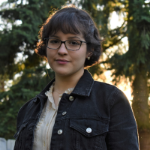
Alexa is an avid journalist seeking an A.A. with an emphasis on Global Studies at Seattle Central College. She's interested in pursuing investigative journalism to report on social struggles like immigration, civil rights, and access to education in South and North America. She is currently working to cover budget cut reforms at Central and civil rights movements in Seattle. Alexa is also a Youth Council Member at OneAmerica, advocating for greater access to quality education for immigrants and refugees in WA. She is a first-generation American who has travelled to 13 countries to explore world cultures and politics.


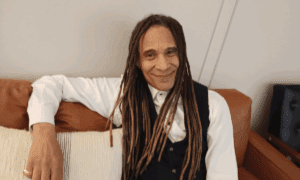
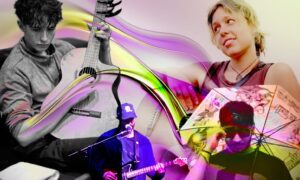

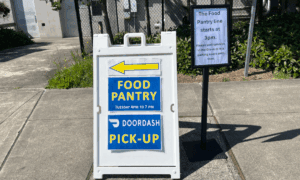
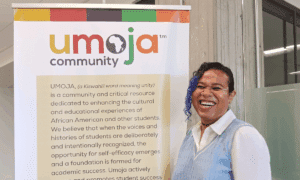
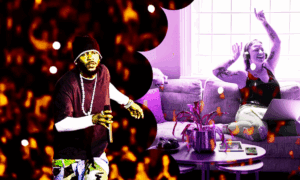

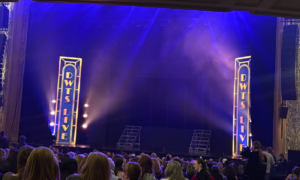

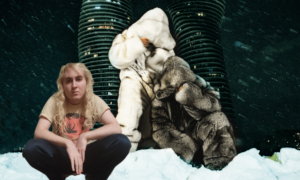
Be First to Comment